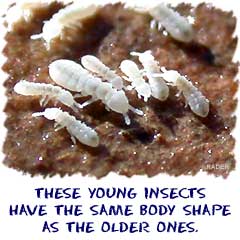
Insects Are Everywhere
We've talked about arthropods with spiders and crustaceans, but the biggest category of arthropods is the uniramians with all insect species. There are about 26 orders in the Class Insecta and you will find species everywhere. There may be tiny little fleas and there may be monster mosquitoes in the jungle. There may be beetles digging in burrows under the ground or dragonflies zipping around a pond. Insects are everywhere. Even in a simple backyard garden you might find twenty species that include butterflies, aphids, bees, flies, beetles, and grasshoppers.
Basic Structure Stuff
With such a variety, where do you start? Can a class with so many species have any similarities? Yes. They are hexapods. That means they usually have six legs. While a deer might have four and a spider might have eight, insects usually have six legs. They have exoskeletons made of chitin. They usually have compound eyes. Compound eyes have a series of facets, each one acts like a little eye with its own parts. A fly's eye is a classic example of a compound eye. They also have complete digestive tracts. While it might not seem like a big deal to you, having a mouth and an anus is a big advantage for an organism.That's where our list of similarities will end. The fun stuff is in the specialized structures you will find on insects. Insects were the first organisms to fly. Several species developed wings of transparent chitin and flight muscles that contract quickly. Flying was a big advantage when species were developing. A whole niche was open for new species. Many insects have also developed toxins. Bees are an easy example of insects that can sting and poison you. Speaking of bees, many insects have developed different compounds beyond poisons. Insects can make wax, silk, and honey. Some insects such as butterflies have antennae. The list goes on.

Metamorphosis
Insects go through a process of metamorphosis. It's not the same for all species. Grasshoppers go through incomplete metamorphosis that happens when it loses its exoskeleton as it grows. It is incomplete because a baby grasshopper looks basically like an adult grasshopper, just smaller. Other insects go through a complete metamorphosis. These insects include butterflies and have a complete change in body structure. Butterflies start as eggs and hatch into caterpillars. When the time comes, those caterpillars develop a protective case and transform into a butterfly. The beginning looked nothing like the end.Humans and Insects
We love them and we hate them. Mosquitoes spread diseases across the world. Since they take in blood, small viruses and microorganisms can hitch rides and move from one organism to another. For every mosquito there is a honey bee that helps us pollinate crops and provides us with some types of food. While the bees might sting when they feel threatened, they make modern farming possible.Back to the negative. Insects can destroy our crops. Locust swarms can eat entire wheat fields or fruit flies lay eggs in our fruit. It's a constant battle to find a natural way to control insects and still allow them to survive. The thing you need to remember is that the insects don't want to hurt us or compete with us. They are just out there trying to survive. They look for opportunities and take advantage of them. An opportunity for an insect might have ladybugs eating aphids from our plants. Another opportunity might have termites eating the wood in your house. They just go where the food is.
► NEXT PAGE ON INVERTEBRATES
► NEXT STOP ON SITE TOUR
► RETURN TO TOP OF PAGE
► Or search the sites...
► NEXT STOP ON SITE TOUR
► RETURN TO TOP OF PAGE
► Or search the sites...
Related Video...
Honeybees (NASA eClips Video)
Encyclopedia.com:
http://www.encyclopedia.com/topic/insect.aspx
Wikipedia:
http://en.wikipedia.org/wiki/Insect
Encyclopædia Britannica:
http://www.britannica.com/EBchecked/topic/289001/insect



